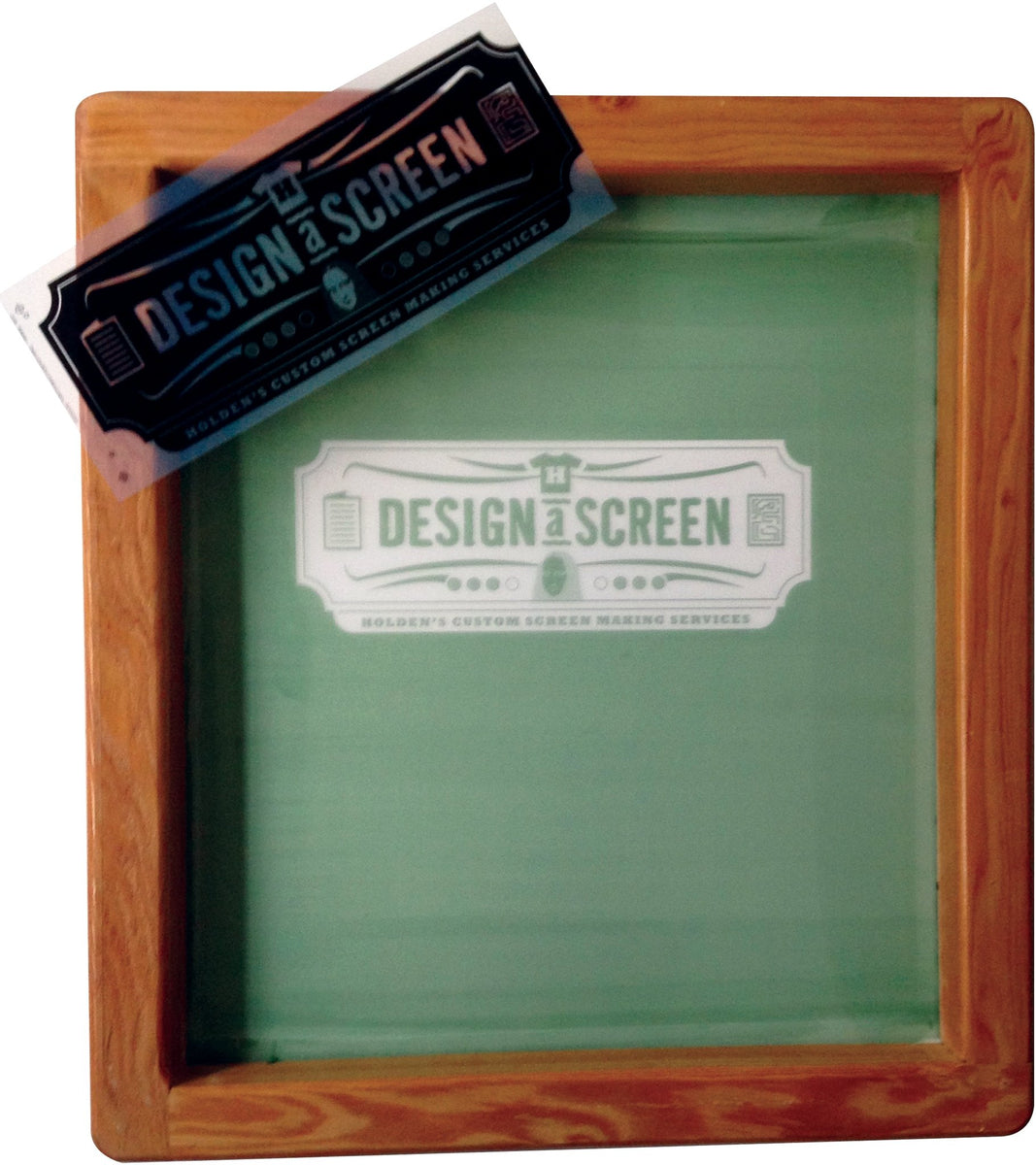Complete Screen Printing Kit for Artists and Creators
Complete Screen Printing Kit for Artists and Creators
Blog Article
Screen Printing Uncovered: Whatever You Required to Find Out About Tee and Garment Printing Methods
Display printing is an interesting method that combines art with strategy, using limitless possibilities for creativity. All set to check out the vital aspects that make screen publishing an art form?
The Essentials of Display Printing: How It Works
When you dive right into screen printing, you'll discover it's both a science and an art. At its core, screen printing involves creating a pattern, or display, that allows ink to pass through only in details locations.
Placement the display over the fabric, after that utilize a squeegee to press ink through the screen onto the garment. Each action is necessary, and mastering them will boost your display printing abilities, transforming basic garments right into distinct, meaningful pieces.
Kinds Of Screen Printing Techniques
As soon as you realize the basics of display printing, it's time to discover the different methods that can elevate your designs. One preferred approach is typical display printing, where ink is pushed with a stenciled screen.
If you're going for fine details, think about discharge printing. This technique removes dye from the textile, leaving a soft, classic appearance. An additional alternative is plastisol printing, understood for its sturdiness and brilliant colors, making it a favored for numerous brand names. Experiment with halftone printing to create gradient effects and detailed layouts. Each strategy has its special charm, so do not think twice to try them out to discover what suits your design best!
Necessary Equipment for Display Printing
To accomplish spectacular outcomes in screen printing, having the ideal tools is fundamental. You'll need a tough display printing frame, which holds the mesh that transfers your design onto the garment. Next, invest in premium squeegees; these are important for using ink uniformly throughout the display.
Picking the Right Inks and Products
When choosing inks and materials for display printing, you need to take into account the sort of ink that functions finest for your project. Think of material compatibility to assure your layouts look terrific and last long. Check out environmentally friendly ink options to make your printing procedure a lot more sustainable.
Sorts Of Display Inks
Selecting the right display ink is necessary for accomplishing dynamic, durable prints that fulfill your job's requirements. There are numerous kinds of screen inks to check out. Plastisol ink is prominent for its versatility and simplicity of use, offering outstanding color opacity on dark fabrics. Water-based ink, on the other hand, offers a softer feeling and is environmentally friendly, making it perfect for those looking to decrease their environmental influence. Discharge inks get rid of dye from the fabric, causing a soft, vintage appearance however require certain handling. Specialty inks, such as glow-in-the-dark or metal, can add one-of-a-kind effects to your layouts. Evaluate your job requirements and pick the ink that lines up ideal with your preferred end result.

Fabric Compatibility Factors To Consider
Understanding fabric compatibility is vital for attaining top quality screen prints, particularly considering that different products respond distinctively to various inks. When choosing inks, consider the textile kind-- cotton, polyester, or blends. For cotton, water-based inks work well, offering soft qualities and breathability. Polyester, on the various other hand, usually calls for plastisol inks for much better bond and lively colors. You may require to utilize a combination of both types if you're publishing on blends. Constantly examine your inks on sample textile to assure they stick effectively and maintain color integrity. Furthermore, bear in mind that textile weight and texture can affect the final outcome, so picking the ideal ink and material combination is important for your project's success.
Eco-Friendly Ink Options
Green inks are becoming a prominent selection for display printers who want to decrease their environmental influence while maintaining high quality. When picking inks, think about water-based inks, which are less damaging and easier to cleanse up contrasted to conventional solvents.
In addition, look for inks made from renewable energies, such as soy or vegetable-based alternatives. By selecting the right inks and products, you'll not only produce sensational designs but additionally add to an extra sustainable printing process. Make the button, and your prints will show your commitment to the environment!
Preparing Your Layout for Display Printing

File Layout Requirements
To ensure your design looks vivid and sharp on textile, you'll require to pay close focus to file layout requirements for display printing. Beginning with vector files like AI or EPS, as they can be scaled without losing top quality. If you use raster pictures, select high-resolution files, such as TIFF or PNG, ideally at 300 DPI. Stay clear of using JPEGs, as they can lose quality when resized. Also, make sure your style has a clear background to avoid unwanted white edges on your prints. Finally, keep shade modes in mind; CMYK is typical for screen printing, so transform your RGB develops as necessary. By adhering to these standards, you'll establish your art work up for an effective print.
Shade Separation Methods
Color splitting up is an important step in preparing your layout for screen printing, and understanding it can substantially improve your print top quality. You'll need to damage your style into specific colors, as each shade needs a separate display during printing. This accuracy not only ensures accurate color depiction yet also enhances the printing procedure.
Resolution and Size
Achieving the best outcomes in display printing begins with assuring your style has the ideal resolution and dimension. Preferably, your art work must be at the very least 300 DPI (dots per inch) for sharp, clear prints. Your final item may look less than professional and pixelated. if you use reduced resolution.
When it involves dimension, think about the dimensions of your print location. Design your art work to match the final print size, preferably creating it in the actual dimensions you'll be printing. In this manner, you'll avoid any unforeseen scaling concerns.
Always check your style in both vector and raster styles. Vector graphics can be scaled without shedding top quality, making them perfect for screen printing. Preparing properly will ensure your layout looks remarkable on every garment!
Step-by-Step Screen Printing Process
Screen printing is a dynamic process that enables you to produce vivid layouts on various surfaces. To begin, you'll require a display, emulsion, and your picked ink. Prepare your display by cleaning it extensively. Next off, apply this the emulsion equally and let it dry in a dark area. As soon as completely dry, reveal your display to light with your design put on it, which will certainly set the solution where the light hits, creating a stencil - screen printing kit.
After rinsing the unexposed solution, your display is all set. Establish it up on your printing surface area and straighten your garment underneath it. Put ink onto the display and make use of a squeegee to push the ink through the stencil onto the fabric. Lift the screen thoroughly and let the print dry. Heal the ink using heat to assure longevity. That's it! You have actually effectively screen published your design.
Tips for Effective Screen Printing Projects
While you're diving right into your screen printing tasks, keep in mind that preparation is vital to success. Begin by collecting all your products-- inks, squeegees, displays, and garments. A tidy work space aids prevent undesirable errors, so clean up before you begin.
Next, verify your artwork is high-resolution and effectively sized for your garment. Test your screen for correct direct exposure and clean it thoroughly to stay clear of smudges. When blending your inks, comply with the producer's standards to achieve the ideal consistency.
Throughout printing, apply also stress with your squeegee for consistent outcomes. Don't hurry; take your time to verify each print satisfies your standards. After printing, allow your garments dry entirely prior to taking care of or packaging them.
Lastly, constantly maintain an example of your work for future referral. This way, you can examine your progression and improve your methods gradually. Satisfied printing!

Often Asked Concerns
Exactly how Long Does It Take to Establish a Screen Printing Job?
Setting up a screen printing job normally takes around 30 mins to an hour. You'll prepare the displays, mix inks, and readjust journalism. The moment varies based on complexity and experience, so remain organized!
Can I Print on Different Material Enters Using the Same Technique?
Yes, you can publish on various material types utilizing the exact same method, however you'll need to change your setups and inks. Some textiles soak up ink in different ways, so experimenting assurances the very best results for every product.
What Are Usual Mistakes to Avoid in Screen Printing?
When display printing, avoid typical blunders like using the incorrect ink, overlooking appropriate exposure times, or skipping pre-press checks. Always test your configuration and keep tidy screens to guarantee top quality outcomes each time.
How Can I Properly Clean and Keep My Screen Printing Tools?
To properly tidy and keep your screen printing equipment, you should regularly clean displays with proper solvents, examine mops for wear, and ensure all devices are saved dust-free and dry. Uniformity improves and avoids costly repairs performance.
Is Display Printing Eco Pleasant Contrasted to Other Methods?
Display printing can be a lot more eco-friendly than other techniques, especially if you utilize water-based inks and eco-conscious products. By picking lasting products and practices, you minimize waste and lessen your influence on the planet.
Screen Printing Uncovered: Everything You Required to Know About Tee Shirt and Garment Printing Methods
At its core, screen printing involves developing a stencil, or screen, that permits ink to pass through just in particular locations. Position the display over the material, after that use a squeegee to press ink via the display onto the garment. One preferred method is traditional display printing, where ink look at this now is pressed with a stenciled display.When choosing inks and products for display printing, you need to take right into account the my review here type of ink that works ideal for your job.
Report this page